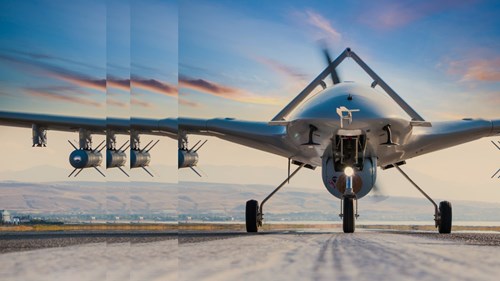11th hour? EU Imposes Another Round of Sanctions Against Russia
On June 21, 2023, EU member states agreed on the eleventh package of sanctions against Russia over its invasion of Ukraine, walking a tightrope between enforcing sanctions compliance and not alienating third countries. The sanctions package was published in the Official Journal of the EU on June 23, 2023. This News Update provides an overview of the topline provisions.
The package focuses on cracking down on sanctions circumvention and includes a novel “anti-circumvention tool” (A.) potentially targeting third countries circumventing EU sanctions. Further, the transit ban for EU exports through Russia has been extended (B.) and the list of entities sanctioned under Regulation (EU) No 833/2014 (amending act available here) expanded to include for the first time entities in countries other than Russia and Iran. Equally, additional persons have been added to the personal sanctions under Regulation (EU) No 269/2014 (C., amending acts available here and here). Lastly, restrictions on trade have also been intensified (D.).
Commission President von der Leyen welcomed the agreement, noting the sanctions package would “deal a further blow to Putin’s war machine with tightened export restrictions, targeting entities supporting the Kremlin.” She added: “Our anti-circumvention tool will prevent Russia from getting its hands on sanctioned goods.”
A. The New Anti-Circumvention Tool
In a softening of the Commission’s initial proposal, the anti-circumvention tool enshrined in newly added Art. 12f of Regulation (EU) No 833/2014 allows the Council – as an exceptional measure of last resort – to restrict the sale, supply, transfer or export of certain goods and technology to third countries that are at a continued and particularly high risk of sanctions circumvention.
The tool is to focus on specific high-risk goods that are under EU sanctions and have been proven to make their way to Russia nonetheless. These goods and the third countries concerned will be listed in Annex XXXIII added to Regulation (EU) No 833/2014. Per Art. 12f para. 3 of this Regulation, sensitive dual-use goods and technology or goods and technology that might contribute to the enhancement of Russia’s military, technological or industrial capacities or to the development of Russia’s defense and security sector can be added to Annex XXXIII.
As for the third countries potentially listed in Annex XXXIII, Art. 12f para. 3 of Regulation (EU) No 833/2014 stipulates that only countries can be listed which the Council has determined to have “systematically and persistently failed to prevent the sale, supply, transfer or export to Russia of goods and technology, as listed in that Annex, exported from the Union, despite the Union’s prior outreach and assistance to the country in question.“ Notably, this provides for several off-ramps and ways for diplomatic engagement before any country could be listed.
The exceptional nature of the tool is further underscored by the requirement that the EU “inform and actively seek the views of the government of” the third country in question before including it on the list. Moreover, the EU Commission in its FAQ highlights that the Annex XXXIIII, which is currently empty, “would only be populated if no other solution could be found.” In addition, the inclusion of a third country and targeted goods to Annex XXXIII would first require a unanimous Council decision.
B. Extended Ban on Transit through Russia of Certain EU Exports
As an additional measure to tackle sanctions circumvention, per newly added Art. 2a para. 1a and Art. 3c para. 1a Regulation (EU) No 833/2014, goods and technology exported from the EU listed in Annexes VII and XI of this Regulation, respectively, may not transit through Russia. Annexes VII and XI include goods that could contribute to Russia’s military and technological enhancement or to the development of its defense and security sector, or are suitable for use in the aviation or space industry. By forcing EU exporters to bypass Russian territory altogether, the EU seeks to minimize the risk of such sensitive shipments being diverted whilst in Russia.
Further, access to EU ports is to be denied to vessels that have participated in ship-to-ship transfers suspected of violating the ban on importing Russian seaborne crude oil. On land, Russian trailers and semi-trailers are fully banned from transporting goods to the EU.
C. Expanded Listings
Extending the remit of sanctions to include companies and third countries through which Russia has been able to source sanctioned goods emerged as one of the most contentious issue in the drawn-out negotiations. Per reports, the Commission had initially proposed adding eight Chinese entities to Annex IV of Regulation (EU) No 833/2014. Following EU member states’ concern over the ramifications of listing Chinese companies, the sanctions package now lists only three Hong Kong-based companies. Media reports suggest the EU Commission expects China to address the circumvention of EU sanctions by the other five entities. A total of 87 new entities were added to the list, including in third countries other than China (Armenia, Hong Kong, Syria, the United Arab Emirates and Uzbekistan). Besides Iran, this marks the first time EU sanctions against Russia include entities in third countries.
The eleventh package also adds another 71 individuals and 33 predominantly Russian entities to the list of natural and legal persons subject to asset freezes and the prohibition to make funds and economic resources available to them per Art. 2 of Regulation (EU) No 269/2014 in conjunction with Annex I of this Regulation. Amongst the additions to Annex I are senior military officials, persons involved in the illegal deportation of Ukrainian children to Russia, Russian IT companies providing critical technology and software to Russian intelligence as well as two banks (CMRBank and MRB Bank).
D. Trade Restrictions
Other notable changes include applying restrictions on the import and export of goods at a higher classification level, i.e. on the four-digit customs code of the Combined Nomenclature (“CN”) instead of the previous six-digit level. Whilst serving the proclaimed goal of simplifying compliance monitoring by customs, this also means the export bans apply to a much wider range of goods than previously. For example, the import ban on iron and steel products per Art. 3g para. 1 of Regulation (EU) No 833/2014 now uniformly applies at the four-digit level and encompasses headings 7206 CN to 7229 CN and 7301 CN to 7326 CN. Likewise, the export ban per Art. 3k of Regulation (EU) No 833/2014 on goods listed in Annex XXIII of this Regulation now predominantly targets the four-digit level. Notably, Annex XXIII now applies to headings 8477 CN (machinery for working rubber or plastics) and 8482 CN (ball or roller bearings).
Further, exports of all cars with an engine size exceeding 1.900 cm³ are now banned, as are exports of yachts.
E. Background & Outlook
Von der Leyen had outlined the EU’s most recent round of sanctions on the margins of her visit to Kyiv in early May. Von der Leyen promised the EU would do “everything in our power to erode Putin’s war machine and revenues” and reiterated sanctions were working. This package, Von der Leyen said, would focus on “cracking down on circumvention” of EU sanctions – specifically by expanding the transit ban to include advanced tech products and aircraft parts, introducing a last resort tool for EU member states to ban specific exports to third countries, and banning so-called shadow entities from Russia and third countries intentionally circumventing sanctions.
The regulations were published in the Official Journal of the EU on June 23, 2023 and entered into force that day (additions to Annex I of Regulation (EU) No 269/2014) and the day after (amendments of Regulation (EU) No 833/2014). Once again, the publication of the new sanctions package was delayed by discussions between the member states. The public wrangling over this iteration again may indicate troubled waters ahead as sanctions take a toll on EU member states’ economies. It remains to be seen whether EU member states can return to the relatively quick and silent process on previous sanctions packages.
Contact
Share
Well
informed
Subscribe to our newsletter now to stay up to date on the latest developments.
Subscribe now











